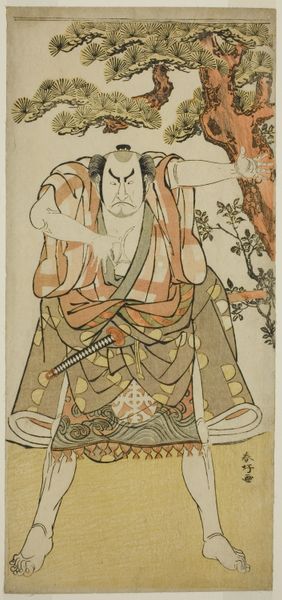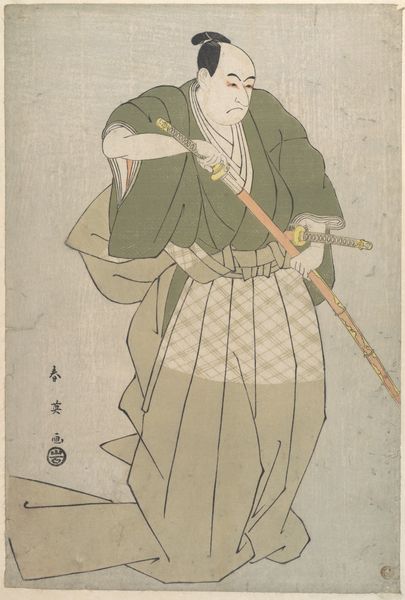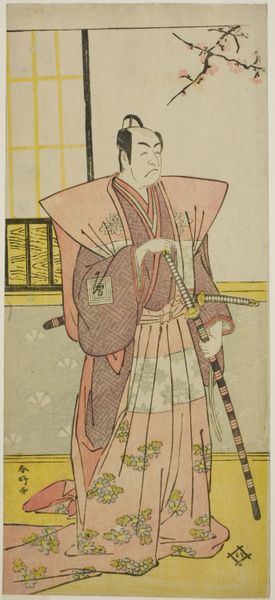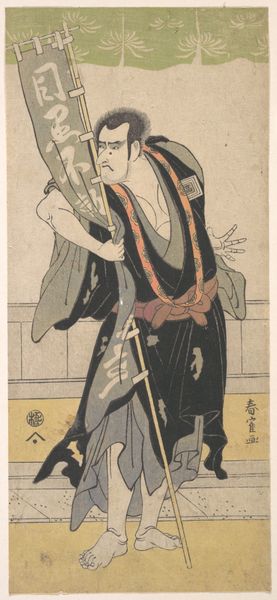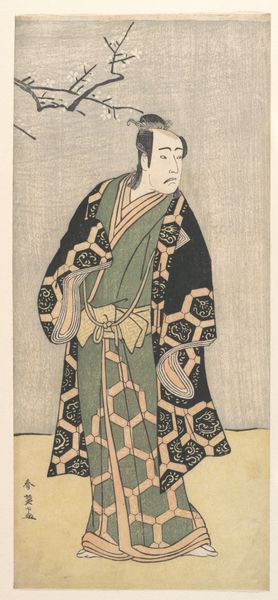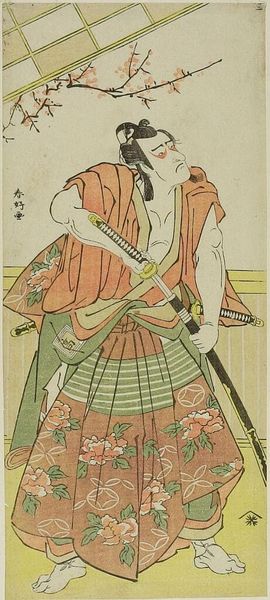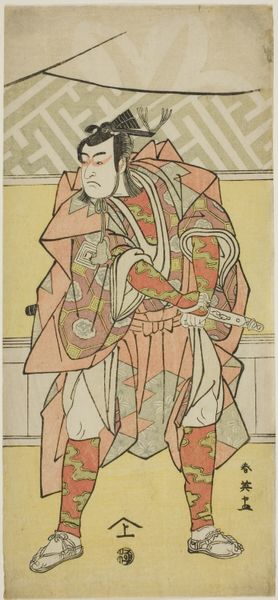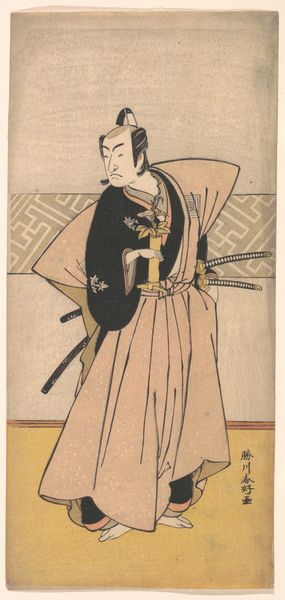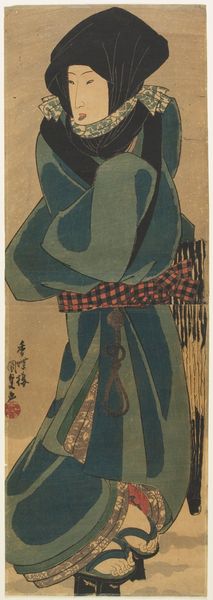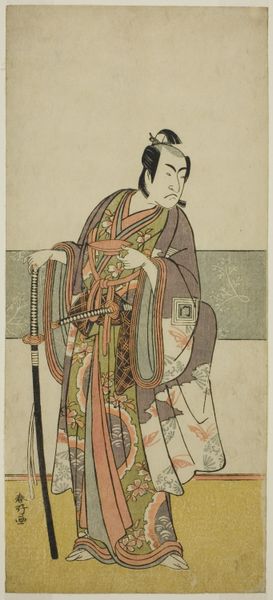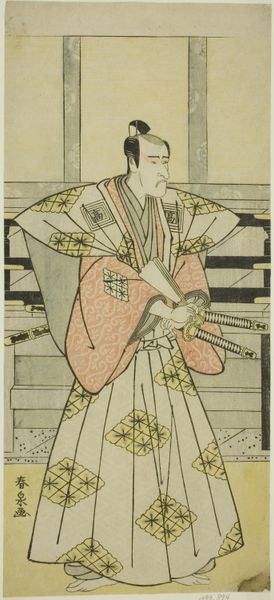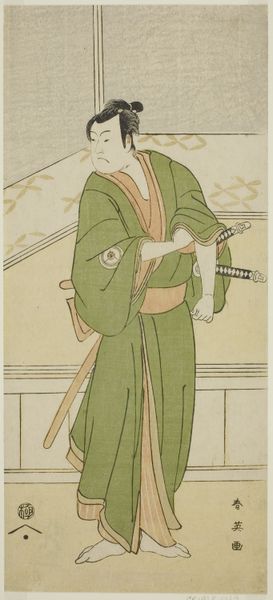
The Actor Matusmto Koshiro IV as Ise no Saburo Disguised as Mizoro no Sabu in the Play Mure Takamatsu Yuki no Shirahata, Performed at the Ichimura Theater in the Eleventh Month, 1780 c. 1780
0:00
0:00
#
portrait
# print
#
caricature
#
asian-art
#
caricature
#
ukiyo-e
Dimensions: 32.2 × 14.5 cm (12 11/16 × 5 11/16 in.)
Copyright: Public Domain
Curator: This captivating print, made around 1780, comes to us from Katsukawa Shunsho. Its rather lengthy title tells us quite a lot: "The Actor Matusmto Koshiro IV as Ise no Saburo Disguised as Mizoro no Sabu in the Play Mure Takamatsu Yuki no Shirahata, Performed at the Ichimura Theater in the Eleventh Month, 1780." It resides here at the Art Institute of Chicago. Editor: My first thought is that the disguise isn't particularly effective! The elaborate costume and somewhat burdened expression give the game away, I think. Curator: It is interesting how those elements interplay! There's an intentional layering of identities at work. On one level, we have the actor, Matsumoto Koshiro, but he’s portraying Ise no Saburo, *who in turn* is disguised as Mizoro no Sabu for the role he plays in *Mure Takamatsu Yuki no Shirahata*. What do you make of those layers? Editor: Well, layers of identity is central to *ukiyo-e*, but the emphasis on the face immediately brings in traditions of theater masks and ritual performances, linking back to something primal about how humans use appearances to convey meaning. It’s a really complex construction. Curator: The artist uses caricature, perhaps hinting at underlying social commentary, considering the popularity of these actors among various social classes. Editor: Indeed! Note the *mon*, the stylized floral emblem, clearly visible on his robe, signifying not just an affiliation, but perhaps even challenging rigid class structures of the time. Think of the chrysanthemum for the imperial family, and here, he carries one with great pride despite his disguised lower status! The psychological aspect, with all these codes, feels immense. Curator: It feels like Shunscho's work transcends the role of simply memorializing a theatrical event. It provokes us to confront power dynamics, subversion, and the blurred lines between illusion and reality that underpin much of human interaction. Editor: Absolutely, and the weight of that wooden frame on his back? Not merely stagecraft, but emblematic of burdens carried, roles enforced. An icon of the human condition if ever there was one, framed in the ephemera of the stage! Curator: What an illuminating read of an intriguing artwork! Editor: It's always revealing to consider art's historical depths. Thank you.
Comments
No comments
Be the first to comment and join the conversation on the ultimate creative platform.
